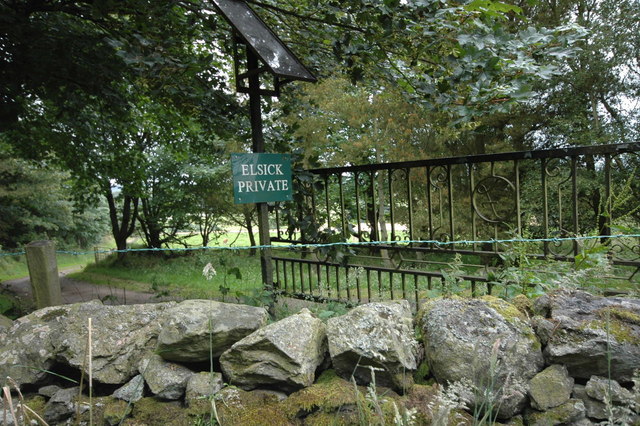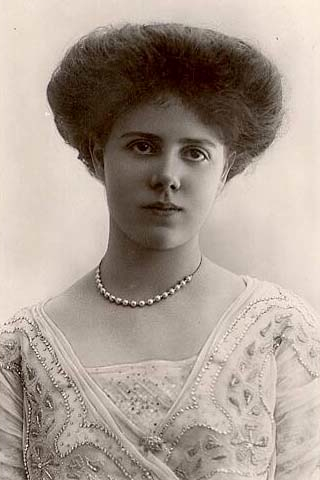|
Bannerman Baronets
The Bannerman Baronetcy, of Elsick in the County of Kincardine, is a title in the Baronetage of Nova Scotia. It was created on 28 December 1682 for Alexander Bannerman. The eleventh Baronet was a pioneer military aviator. The twelfth Baronet was a soldier and courtier. Bannerman baronets, of Elsick (1682) *Sir Alexander Bannerman, 1st Baronet (died 1711) *Sir Alexander Bannerman, 2nd Baronet (died 1742) *Sir Alexander Bannerman, 3rd Baronet (died 1747) *Sir Alexander Bannerman, 4th Baronet (died 1770) *Sir Edward Trotter Bannerman, 5th Baronet (died 1796) *Sir Alexander Bannerman, 6th Baronet (1741–1813) *Sir Alexander Bannerman, 7th Baronet (1769–1840) *Sir Charles Bannerman, 8th Baronet (1782–1851) *Sir Alexander Bannerman, 9th Baronet (1823–1877) *Sir George Bannerman, 10th Baronet (1827–1901) *Sir Alexander Bannerman, 11th Baronet (1871–1934) * Sir Arthur D'Arcy Gordon Bannerman, 12th Baronet KCVO CIE (1866–1955) *Sir Donald Arthur Gordon Bannerman, 13th Ba ... [...More Info...] [...Related Items...] OR: [Wikipedia] [Google] [Baidu] |
Elsick House
Elsick House is a historic house in Kincardineshire (now part of Aberdeenshire), North-East Scotland. It is situated in an agricultural area about two miles from the North Sea near the town of Newtonhill; the Elsick Estate is situated within the drainage basin, watershed of the Burn of Elsick, a stream that traverses the estate. The house is located on the Elsick Estate (house), Estate (), and is the present family seat (legal entity), seat of the Duke of Fife. Early area history Elsick House is located near the ancient Causey Mounth trackway, which road was constructed in medieval times to make passable this only available route across the coastal region of the Grampian Mountains, Grampian Mounth connecting points south of Stonehaven to Aberdeen. This ancient drovers' road specifically connected the River Dee, Aberdeenshire, River Dee crossing (where the present Bridge of Dee is situated) via Portlethen Moss, Muchalls Castle and Stonehaven to the south. The route was that taken ... [...More Info...] [...Related Items...] OR: [Wikipedia] [Google] [Baidu] |
Princess Maud, Countess Of Southesk
Maud Carnegie, Countess of Southesk (née Lady Maud Duff; 3 April 1893 – 14 December 1945), titled Princess Maud from 1905 to 1923, was a granddaughter of Edward VII. Maud and her elder sister, Alexandra, had the distinction of being the only female-line descendants of a British sovereign officially granted both the title of ''Princess'' and the style of ''Highness''. Although Princess Maud did not otherwise carry out royal engagements, because of her position in the Commonwealth's order of succession she served as a Counsellor of State between 1942 and 1945. Early life Maud was born at East Sheen Lodge, Richmond-upon-Thames, Surrey, on 3 April 1893. Her father was Alexander Duff, 1st Duke of Fife. He was raised from Earl of Fife, Earl to Duke of Fife following marriage to Maud's mother, Louise, Princess Royal and Duchess of Fife, Princess Louise of Wales, the third child and eldest daughter of the future Edward VII of the United Kingdom, King Edward VII and Queen Alexandra. ... [...More Info...] [...Related Items...] OR: [Wikipedia] [Google] [Baidu] |
Charles Carnegie, 11th Earl Of Southesk
Charles Alexander Bannerman Carnegie, 11th Earl of Southesk (23 September 1893 – 16 February 1992), styled The Honourable Charles Carnegie before 1905 and Lord Carnegie between 1905 and 1941, was the husband of Princess Maud, a granddaughter of King Edward VII. Early life and marriage Charles Alexander Carnegie was born on 23 September 1893 in Edinburgh, Scotland. His father was the 10th Earl of Southesk, the son of the 9th Earl of Southesk and Lady Catherine Hamilton Noel. His mother was Ethel Mary Elizabeth Bannerman. When his father succeeded to the earldom in 1905 he was styled ''Lord Carnegie'' as the eldest son of the Earl of Southesk. Lord Carnegie was educated at Ludgrove School and Eton College. He later joined the British Army and received a commission in the Scots Guard. In 1917, he served as an aide-de-camp to the Viceroy of India. On 12 November 1923 he married Princess Maud at the Royal Military Chapel, Wellington Barracks, London. Princess Maud was the youn ... [...More Info...] [...Related Items...] OR: [Wikipedia] [Google] [Baidu] |
Charles Carnegie, 10th Earl Of Southesk
Charles Noel Carnegie, 10th Earl of Southesk JP DL (20 March 1854 – 10 November 1941), was a Scottish nobleman. Early life Carnegie was the son of the explorer and poet James Carnegie, 9th Earl of Southesk and his first wife Catherine Hamilton Noel, daughter of the Charles Noel, 1st Earl of Gainsborough. He had three older sisters, Lady Arabella Charlotte (wife of Samuel Romilly), Lady Constance Mary (wife of Victor Bruce, 9th Earl of Elgin) and Lady Beatrice Diana Cecilia Diana Cecillia (wife of the Rev. Henry Holmes Stewart). After his mother's death in 1855 at the age of twenty-six, his father remarried to Lady Susan Catherine Mary Murray (eldest daughter of the 6th Earl of Dunmore) in 1860. From his father's second marriage, he had seven younger half-siblings, including: Sir Lancelot Douglas Carnegie, Lady Dora Susan (wife of Maj. Ernest de Rodakowski-Rivers), Lady Elizabeth Erica, Lady Helena Mariota, Lady Katherine Agnes Blanche (wife of Courtenay Morgan, 1st Viscount Tr ... [...More Info...] [...Related Items...] OR: [Wikipedia] [Google] [Baidu] |
Sir Charles Bannerman, 8th Baronet
''Sir'' is a formal honorific address in English for men, derived from Sire in the High Middle Ages. Both are derived from the old French "Sieur" (Lord), brought to England by the French-speaking Normans, and which now exist in French only as part of "Monsieur", with the equivalent "My Lord" in English. Traditionally, as governed by law and custom, Sir is used for men titled as knights, often as members of orders of chivalry, as well as later applied to baronets and other offices. As the female equivalent for knighthood is damehood, the female equivalent term is typically Dame. The wife of a knight or baronet tends to be addressed as Lady, although a few exceptions and interchanges of these uses exist. Additionally, since the late modern period, Sir has been used as a respectful way to address a man of superior social status or military rank. Equivalent terms of address for women are Madam (shortened to Ma'am), in addition to social honorifics such as Mrs, Ms or Miss. ... [...More Info...] [...Related Items...] OR: [Wikipedia] [Google] [Baidu] |
William Keith-Falconer, 6th Earl Of Kintore
William Keith-Falconer, 6th Earl of Kintore, 8th Lord Falconer of Halkerton, 6th Lord Keith of Inverurie and Keith Hall (11 December 1766 – 6 October 1812), was a Dutch-Scottish aristocrat. Early life Lord Kintore was born on 11 December 1766. He was the only son amongst seven daughters born to a Dutch born Englishman Anthony Keith-Falconer, 5th Earl of Kintore and his Dutch wife, Christina Elizabeth Sighterman (d. 1809). His seven younger sisters, none of whom married, were Lady Sibella, Lady Maria, Lady Catherine, Lady Francina, Hon. Jean (who died in infancy), Lady Christiana, and Hon. Helen Keith-Falconer (who also died in infancy). His paternal grandparents were William Falconer, 6th Lord Falconer of Halkerton, a colonel in the Dutch Army (who was the son of David Falconer, 4th Lord Falconer of Halkerton and the former Lady Catherine Margaret Keith, the daughter of William Keith, 2nd Earl of Kintore) and the former Rembertina Maria Idiking (the daughter of Burgomaster Idik ... [...More Info...] [...Related Items...] OR: [Wikipedia] [Google] [Baidu] |
Sir Alexander Bannerman, 7th Baronet
''Sir'' is a formal honorific address in English language, English for men, derived from Sire in the High Middle Ages. Both are derived from the old French "Sieur" (Lord), brought to England by the French-speaking Normans, and which now exist in French only as part of "Monsieur", with the equivalent "My Lord" in English. Traditionally, as governed by law and custom, Sir is used for men titled as knights, often as members of Order of chivalry, orders of chivalry, as well as later applied to baronets and other offices. As the female equivalent for knighthood is damehood, the female equivalent term is typically Dame. The wife of a knight or baronet tends to be addressed as Lady, although a few exceptions and interchanges of these uses exist. Additionally, since the late modern period, Sir has been used as a respectful way to address a man of superior social status or military rank. Equivalent terms of address for women are Madam (shortened to Ma'am), in addition to social honorifi ... [...More Info...] [...Related Items...] OR: [Wikipedia] [Google] [Baidu] |
Wilmington, Delaware
Wilmington ( Lenape: ''Paxahakink /'' ''Pakehakink)'' is the largest city in the U.S. state of Delaware. The city was built on the site of Fort Christina, the first Swedish settlement in North America. It lies at the confluence of the Christina River and Brandywine Creek, near where the Christina flows into the Delaware River. It is the county seat of New Castle County and one of the major cities in the Delaware Valley metropolitan area. Wilmington was named by Proprietor Thomas Penn after his friend Spencer Compton, Earl of Wilmington, who was prime minister during the reign of George II of Great Britain. At the 2020 census, the city's population was 70,898. The Wilmington Metropolitan Division, comprising New Castle County, Delaware, Cecil County, Maryland and Salem County, New Jersey, had an estimated 2016 population of 719,887. Wilmington is part of the Delaware Valley metropolitan statistical area, which also includes Philadelphia, Reading, Camden, and other urban are ... [...More Info...] [...Related Items...] OR: [Wikipedia] [Google] [Baidu] |
Sir Edward Trotter Bannerman, 5th Baronet
''Sir'' is a formal honorific address in English for men, derived from Sire in the High Middle Ages. Both are derived from the old French "Sieur" (Lord), brought to England by the French-speaking Normans, and which now exist in French only as part of "Monsieur", with the equivalent "My Lord" in English. Traditionally, as governed by law and custom, Sir is used for men titled as knights, often as members of orders of chivalry, as well as later applied to baronets and other offices. As the female equivalent for knighthood is damehood, the female equivalent term is typically Dame. The wife of a knight or baronet tends to be addressed as Lady, although a few exceptions and interchanges of these uses exist. Additionally, since the late modern period, Sir has been used as a respectful way to address a man of superior social status or military rank. Equivalent terms of address for women are Madam (shortened to Ma'am), in addition to social honorifics such as Mrs, Ms or Miss. Etymolo ... [...More Info...] [...Related Items...] OR: [Wikipedia] [Google] [Baidu] |
William Ramsay (Royal Navy Officer)
Rear-Admiral Sir William Ramsay KCB (born Burnett; 27 May 1796 – 3 December 1871) was a Scottish admiral in the Royal Navy. Early life and family Ramsay was born at Balmain House in Aberdeenshire, the sixth son of Alexander Burnett (later known as Sir Alexander Ramsay, 1st Baronet of Balmain), and his wife, Elizabeth Bannerman, daughter of Sir Alexander Bannerman, 4th Baronet. Alexander Burnett was the second son of Catherine Ramsay, the granddaughter of Sir Charles Ramsay, 3rd Baronet of Balmain of an earlier creation (1625) in the Baronetage of Nova Scotia, which was inherited by Catherine's brother Alexander. Catherine Ramsay married Sir Thomas Burnett of Leys, 6th Baronet and their elder son, Robert, inherited the Burnett baronetcy. Catherine's brother Alexander, the 6th Baronet, died without sons in 1806 (though two relatives styled themselves as the next baronet, without proving parentage), at which point the Nova Scotia baronetcy either became extinct or dormant ... [...More Info...] [...Related Items...] OR: [Wikipedia] [Google] [Baidu] |






